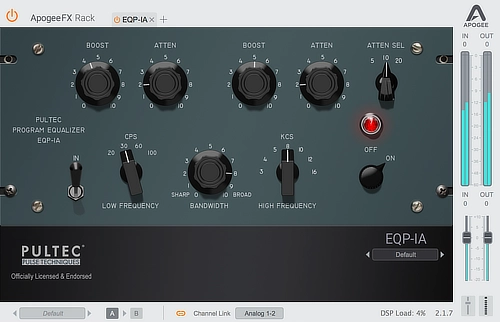Pultec (Pulse Techniques) closed their doors in 1981, but for the entire life of the company the founders, Ollie Summerland and Eugene Shank were the only two employees. Between them, they took care of design, engineering, marketing, sales and production. In the early days of production, each and every piece was hand built by Gene or Ollie in the New Jersey warehouse.
The Pultec EQP-1 was a hand built, tube equalizer. Yes, it was a passive equalizer, using a passive circuit licensed from Western Electric, but the Pultec design used tube gain stages with 16 dB boost to make up the level loss incurred by the passive EQ design.
Unlike many passive equalizers before it, the Pultec, because of the tube gain stage, was a lossless (in terms of signal level) design. One of the beautiful side effects of that tube gain stage, was the colour it added to the signal running through it.
One of the unique features of the Pultec EQP-1 design, is that you can boost and cut the same frequency. Although the manual tells you not to do this, engineers over the years found that with careful tweaking, it can produce some very sweet tones, which has something to do with the fact that the boost has more gain than the cut has attenuation.
In the high-end frequencies, you only have the option to boost, from 3 kHz to 16 kHz. The bandwidth control (or Q) allows for a narrow Q or wide Q as on most parametric equalizers. One can boost with above normal levels and the Pultec remains smooth sounding, and somewhat magical. There is a top end attenuation control offering 5 kHz, 10 kHz and 20 kHz roll off.
Over the years, a number of variations to the EQP-1 were made. The Pultec EQP-1 Program Equalizer featured modified low frequency boost and attenuation response curves plus two additional high frequency shelf boost curves. These old Pultec EQs are ultra-rare, and difficult to find on the secondhand market. There are many plugins emulating it, as well as the rebirth of the Pultec company in roughly 2000.











